Of course, the big birthday in the National Park System being notched this year is at Yellowstone National Park, which turns 150. But there are 11 or 12* other units of the system that turn 50 this year.
Now, 1972 wasn't a watershed year for growth of the National Park System -- 1978 saw 29 units added to the Park System -- but there were diverse attributes brought into the system that year, from the country's first national river and a national seashore to two national recreation areas at opposite ends of the nation.
Here's a look at those parks:
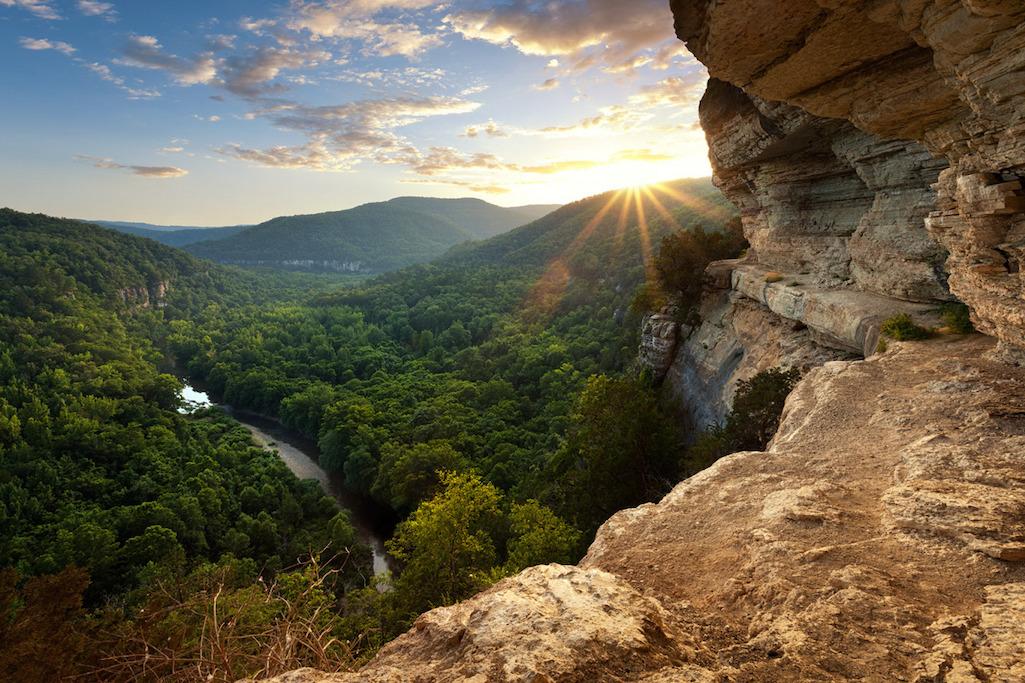
The sun sets over an expansive view of the Ponca Wilderness from a narrow bluff ledge/Aaron Bates via NPS
Buffalo National River, Arkansas, established March 1, 1972
When established, the Buffalo River became the first "national river" in the Park System. It flows for 135 miles and is one of the few remaining undammed rivers in the lower 48 states. Former National Park Service Director George Hartzog, who loved to fish, pushed for the river's addition to the park system. The writer John McPhee captured Hartzog in his element when he joined the director on the Buffalo River for a profile he was developing on Hartzog.
For two hours now, Hartzog has been sitting in a boat on the Buffalo River doing the closest thing to nothing at all. He is fishing. Fishing is his only recreation. The Park Service stocks bass and bream in Prince William Forest Park, near Washington, and Hartzog sometimes goes out there for what he contemptuously calls "put-and-take," but the Buffalo, in Arkansas, in his idea of the real thing, and there is almost nowhere he would rather be.
... "We've got to have this river," Hartzog says. He wants to make its entire hundred and fifty miles a national river, which means that the Park Service would buy the river and all the riverine lands necessary to---as he puts it--"protect its overview." The opposition consists of the Army Corps of Engineers, which would like to arrest the Buffalo with flood-control dams, and private owners who are against the intrusion of the government in any form; but Hartzog thlnks he can get the river for the Park Service, and he will work to get it as long as he needs to. "It's just unspoiled," he says. "People haven't found it yet."
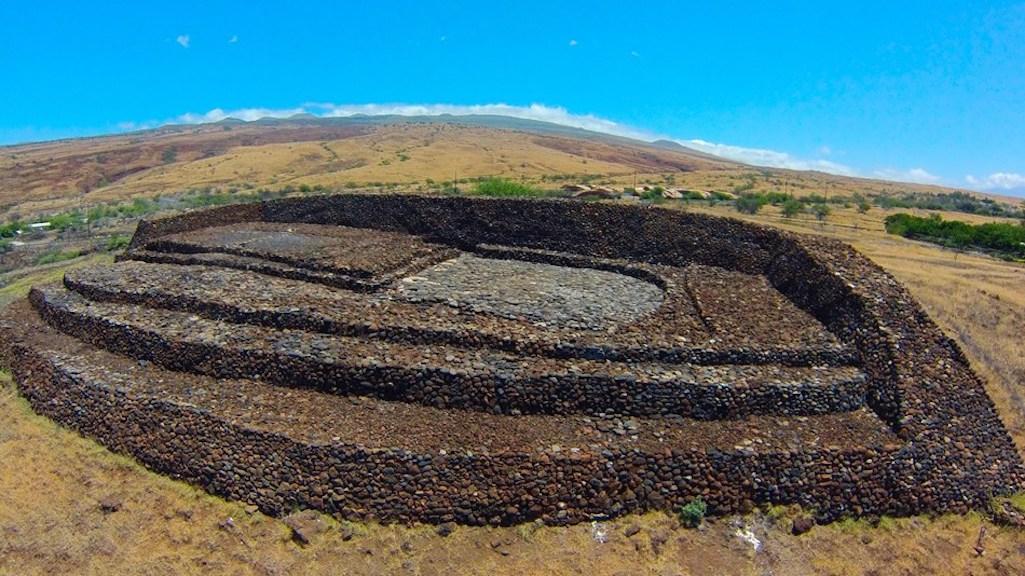
The temple site at Pu'ukohola Heiau/NPS
Pu'ukoholā Heiau National Historic Site, Hawaii, established August 17, 1972
This site preserves a temple built around 1790 under the reign of Kamehameha I, who was able to unite the Hawaiian islands.
Pu'ukohola Heiau was designated as a Historical Landmark by the Hawaiian Territorial Government in 1928. In the 1960s, the Queen Emma Foundation and the Queen’s Medical Center, the Waimea and other Hawaiian Civic Clubs, and the local community groups were instrumental in getting Pu'ukohola Heiau designated as a National Historic Landmark.
The Queen Emma Foundation donated 34 acres of land in 1972 encompassing Pulukohola Heiau and the John Young Homestead made it possible for the establishment of Pu'ukohola Heiau National Historic Site.
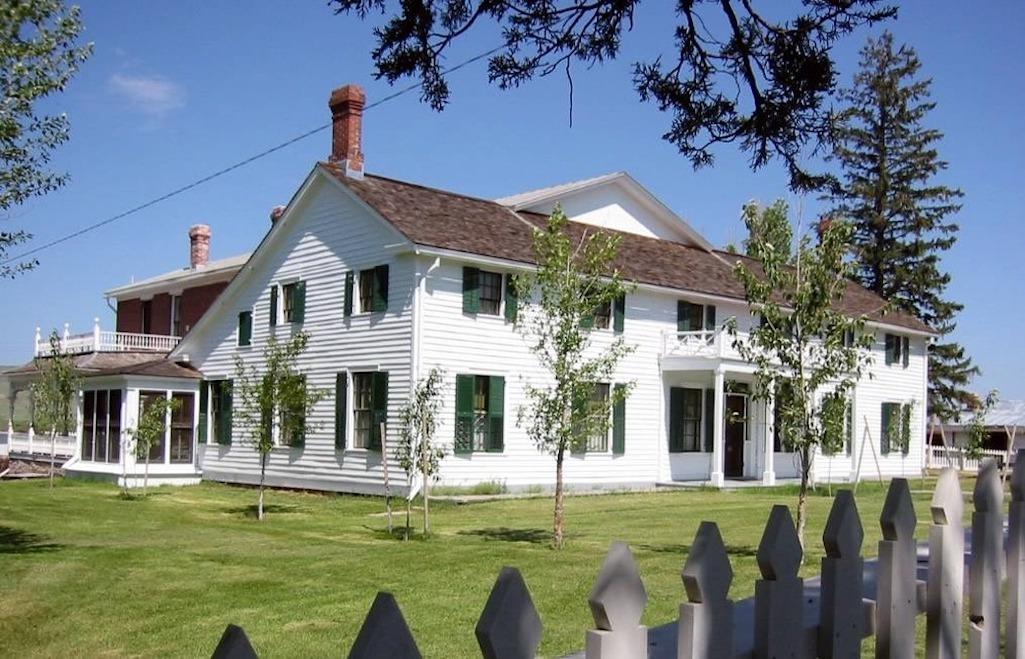
The ranch house at Grant-Kohrs Ranch National Historic Site/NPS
Grant-Kohrs Ranch National Historic Site, Montana, established August 25, 1972
When the brutally cold and snowy winter of 1886-87 swept through the Rockies, it crippled many of the West's cattlemen. For Conrad Kohrs, however, his banker in nearby Butte, Montana, provided him with a $100,000 handshake loan that enabled him to rebuild the largest cattle empire the country has ever known.
The business deal was perhaps the shrewdest and most daring Conrad Kohrs executed, but it gave him the ability to restock his herds while other cattlemen -- some who lost 95 percent of their herds to that terrible winter -- went bankrupt. So successful was the move that the cattle baron paid the loan off in just four years.
John D. Rockefeller, Jr., Memorial Parkway, Wyoming, established August 25, 1972
This parkway provides a scenic link between Yellowstone National Park and Grand Teton National Park. To put a finer point on it, the parkway features a two-lane paved road that connects the South Entrance of Yellowstone with the South Entrance of Grand Teton. The 24,000-acre parkway is more than just a road with great views of the Tetons, the Snake River, and other scenic delights. As in the two parks that it links, the parkway travels through the habitat of an impressive assortment of wildlife, including grizzlies, black bears, moose, elk, mule deer, and bighorn sheep.

The library in the Longfellow House/James P. Jones Photography|RI
Longfellow House Washington's Headquarters National Historic Site, Massachusetts (redesignated from Longfellow National Historic Site 2010), established October 9, 1972
From July 1775 to April 1776, during the siege of Boston, General George Washington and his family lived in a house in Cambridge, Massachusetts, which also served as his headquarters during that period. The house was later the home of Henry Wadsworth Longfellow, a popular 19th-century poet and scholar. The home remains intact to the period of the Longfellow family, including the many artifacts they collected related to Washington and the Revolution. A bust of Washington still stands inside the front door, serving as the unofficial greeter to visitors. Longfellow himself poeticized the former occupant of the home in “To a Child,” noting that “Once, within these walls… The Father of his Country, dwelt.”
Hohokam Pima National Monument, Arizona, established October 21, 1972
Hohokam Pima National Monument recognizes the significance of Snaketown, a Hohokam village inhabited from about 300 AD to around 1200 AD. This ancient village, which may have had as many as 2,000 inhabitants, is within the Gila River Indian Reservation near Sacaton, Arizona.

Thaddeus Kosciuszko's bedroom preserved in the national memorial/NPS
Thaddeus Kosciuszko National Memorial, Pennsylvania, established October 21, 1972
Polish freedom fighter Thaddeus Kosciuszko, who designed many of the fortifications the Colonials used during the American Revolution, lived in this house in Philadelphia. Inside you can see the room where he received notable visitors such as Chief Little Turtle and Thomas Jefferson.
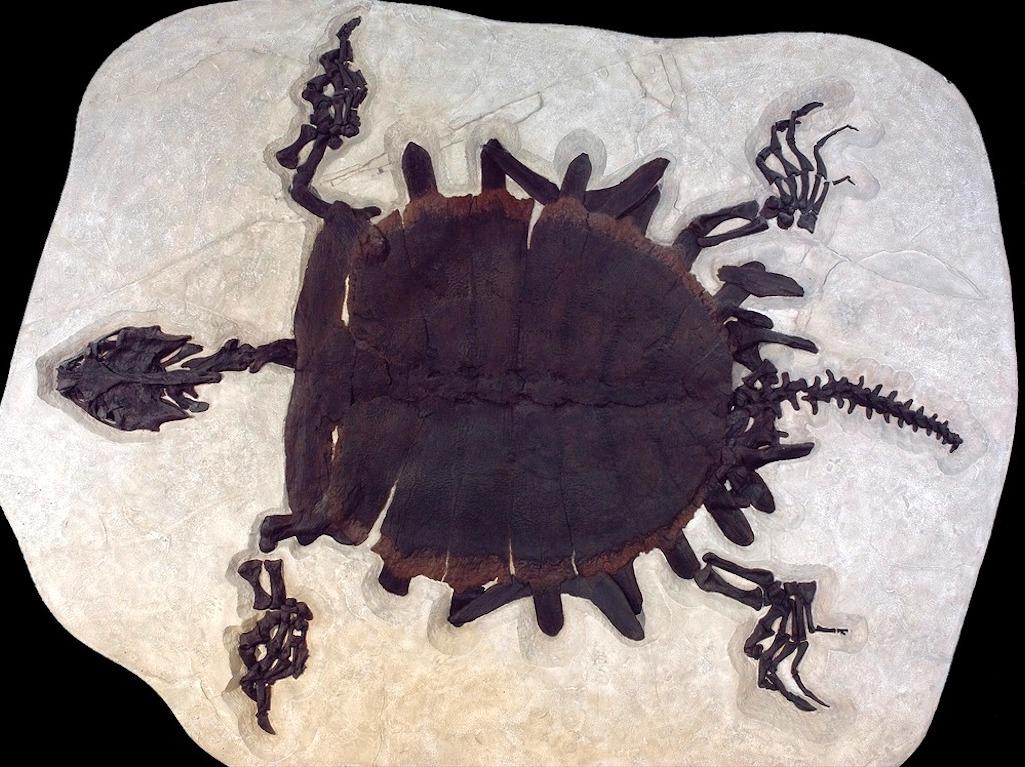
A dark brown fossil turtle on pale tan stone that is only slightly larger than the fossil. The turtle has a fairly long neck and tail, each about as long as the legs/NPS
Fossil Butte National Monument, Wyoming, established October 23, 1972
Fossil Butte in southwestern Wyoming has an amazing display of fossils that date back to when this part of the country was wet and tropical. Gar, herring, and even sunfish (ancient relatives of many of today’s freshwater species) swam in three lakes (Goshute, Uinta, and Fossil) that shimmered here 55 million years ago. While the lakes are gone, the sediments they left behind have long since been compressed into stone, locking many of those aquatic species in place. Visit the monument’s visitor center and not only can you tour a room full of incredible specimens, but you also can watch a preparer clean away the matrix surrounding a fossil.
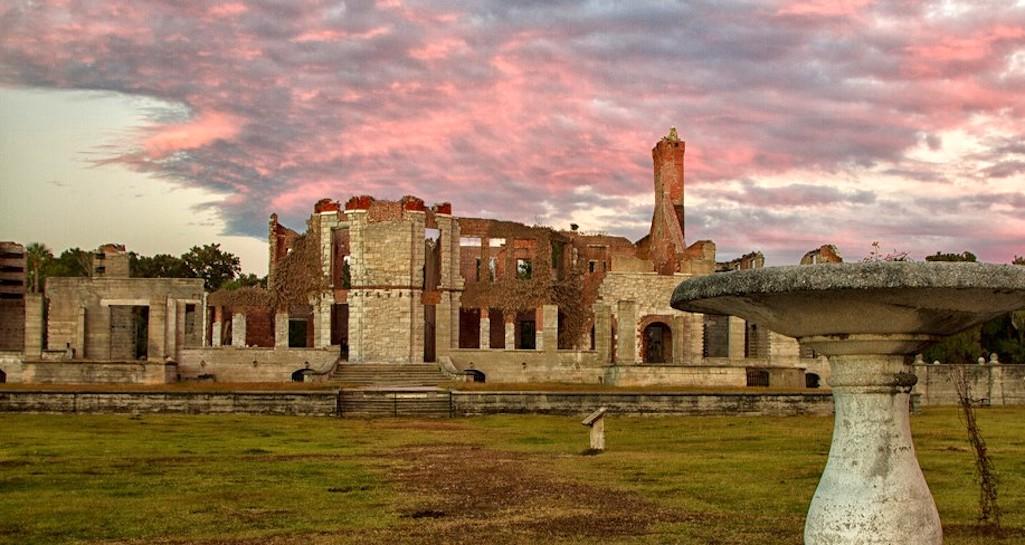
Ruins of the Dungeness Mansion/NPS
Cumberland Island National Seashore, Georgia, established October 23, 1972
Georgia’s southernmost barrier island offers visitors history, nature, and beauty in as peaceful and uncrowded a setting as will be experienced in any unit of the National Park Service. Wandering the grounds of Thomas and Lucy Carnegie’s fire-damaged mansion is likely to result in an encounter with grazing wild horses, descendants of generations of the animals that have populated the island for hundreds of years.
One of America’s most beautiful Atlantic beaches, often with no one else in sight, rewards strollers with an abundance of sand dollars and shells. Visits to the northern portion of the island offer visitors the opportunity of stepping inside the intimate First African American Church where on a September day in 1996 John Kennedy, Jr. married Carolyn Bessette.
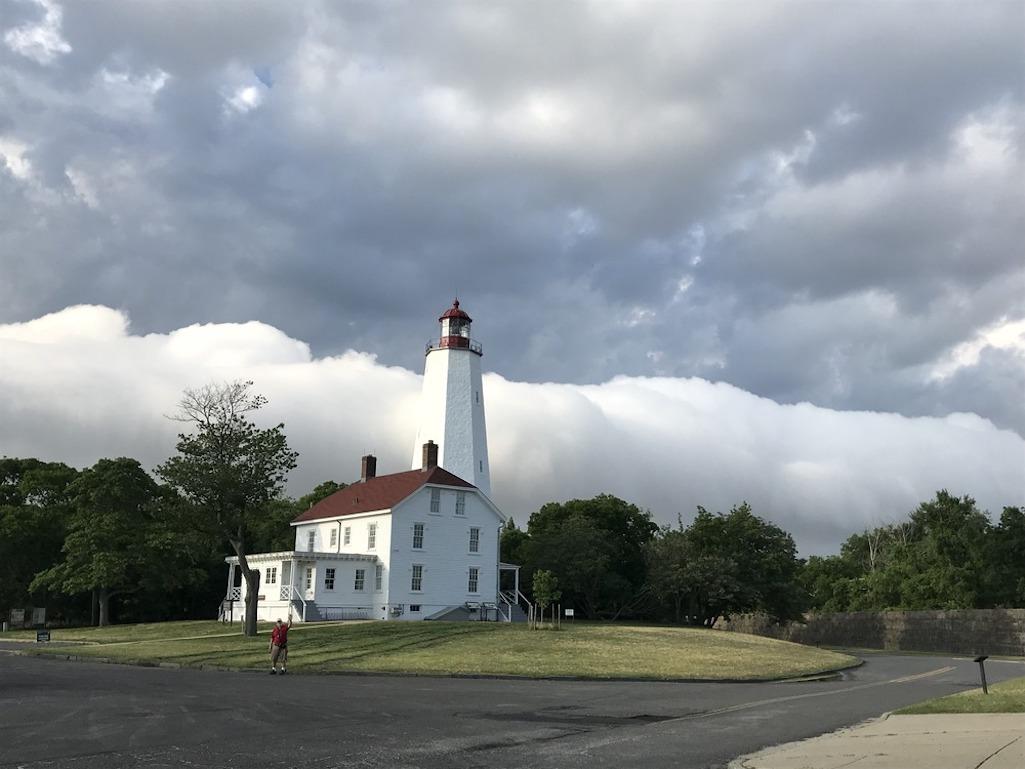
Sandy Hook Lighthouse, more than 250 years old/NPS, Jesse Blatter
Gateway National Recreation Area, New York, established October 27, 1972
Sprawling across the New York-New Jersey major metropolitan area, this park includes a wildlife refuge, a popular beach in New Jersey, historic structures that housed officers protecting New York Harbor, and a lighthouse more than 250 years old. The Jamaica Bay unit of the NRA has been envisioned by the Park Service as becoming the largest urban campground in America, with connections from public transportation to greenways and bikeways, kayaking trails in the Bay, an environmental education center for schools and community groups that will grow stewards for the Bay, and restored landscape elements that reflect the aviation heritage of Floyd Bennett Field.
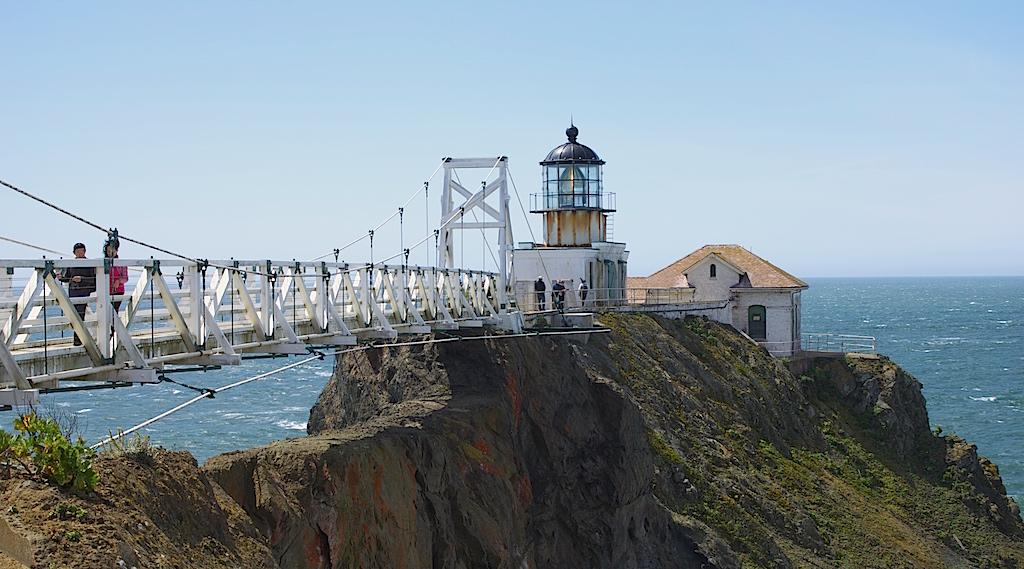
Point Bonita Light at Golden Gate NRA/Kurt Repanshek
Golden Gate National Recreation Area, California, established October 27, 1972
Golden Gate is a wonderful collection of sites centered around San Francisco. Within its realm is Muir Woods National Monument, Alcatraz Island, Point Bonita Light, the Presidio of San Francisco, Fort Point National Historic Site, Crissy Field, and more.
The NRA encompasses more than 80,000 acres with 37 distinct park sites and 1,200 historic structures. There are beaches and more than 130 miles of trails.
If you're looking to avoid crowds in the parks this summer, you'll be able to do that at some of these sites.
* Guadalupe Mountains National Park in Texas was authorized by Congress in 1966, but it wasn't until 1972 that the National Park Service actually established it.



Add comment